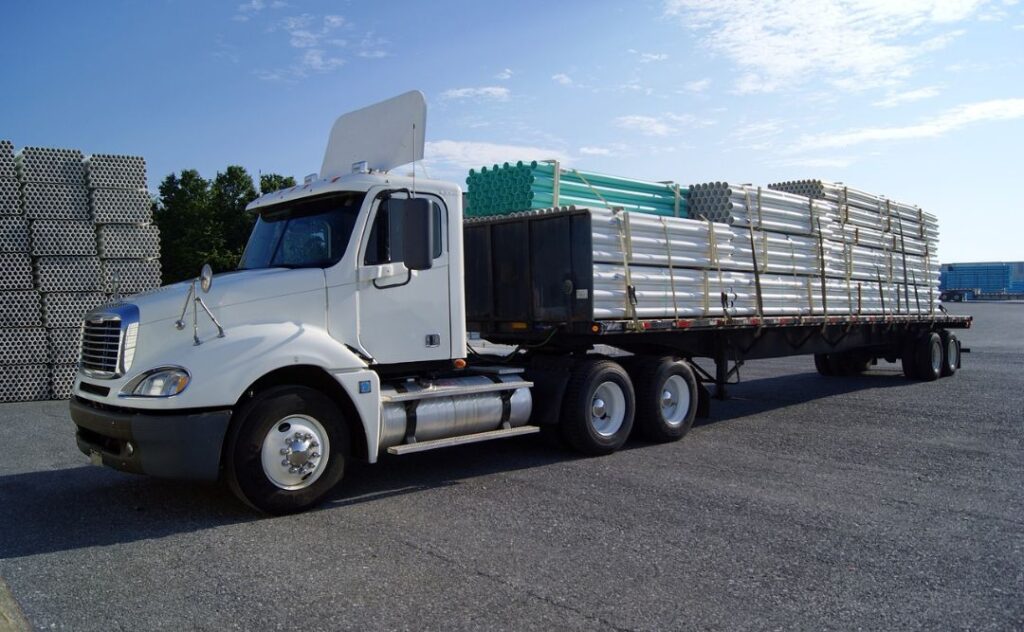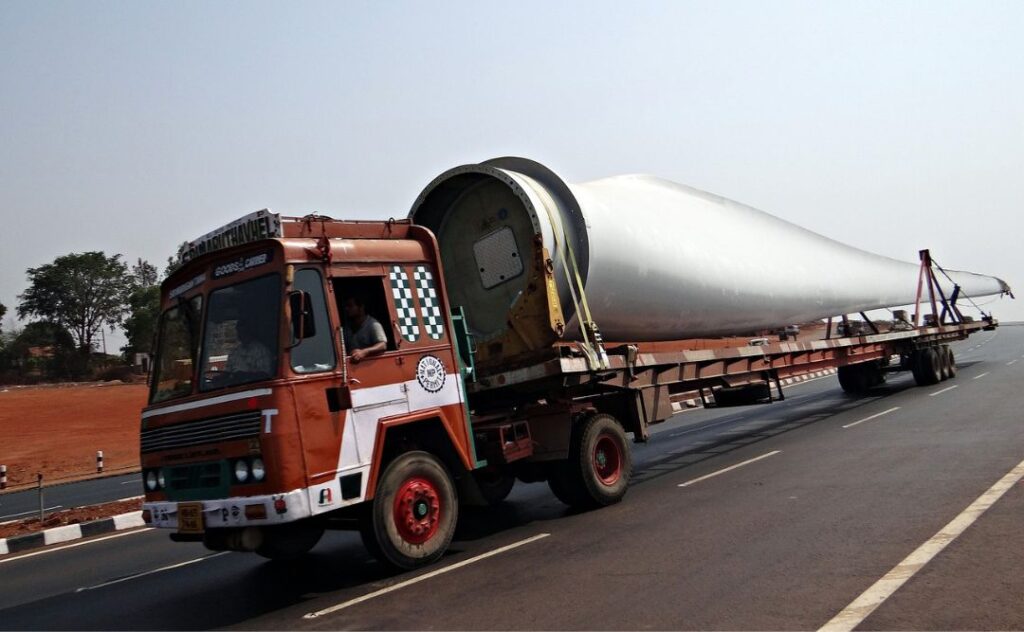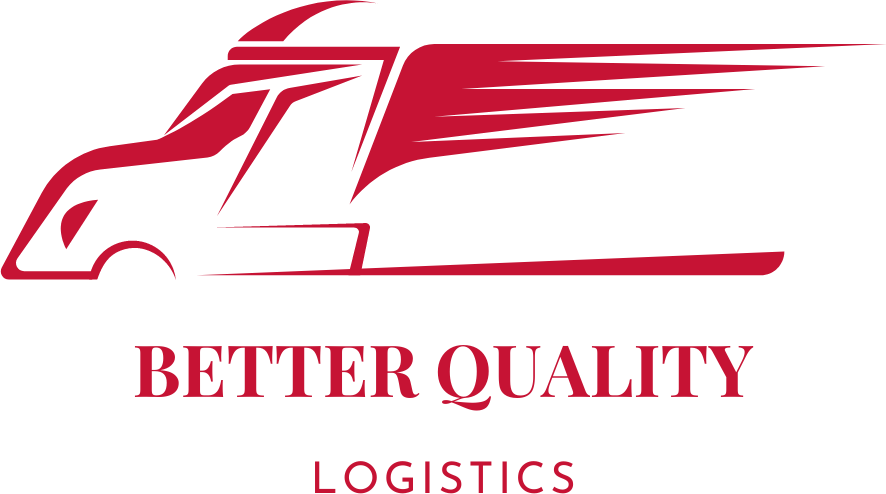Have you ever heard of hotshot trucking? It’s a small part of the trucking industry that’s all about speed and quick deliveries. Hotshot trucking is different from regular trucking because these trucks are used for smaller loads often referred to as LTL or Less than truckload.
Imagine a factory that needs specific parts right away to keep working, or a construction site waiting for building materials or equipment to meet deadlines for their construction project. If the job needs to be done quickly, customers strongly rely on hotshot carriers. They use smaller, faster trucks that can maneuver through traffic and get to its destination on time.
In this guide, we will take you around the world of logistics through hot-shot trucking. We will explain who uses hotshot trucks, Who and what it involves when companies typically use hotshot carriers, where these carriers are allowed to operate, and how hotshot companies find work. Can’t forget the type of trucks used for hotshotting, Hot to start a profitable hotshot trucking company, profitable industries, common cargo, different services you can offer, and most importantly insurance. We Will cover it all in this “one stop for everything hotshot” blog. But, first, we will start with, what is Hotshot Trucking.
Table of Content
1. What is Hotshot Trucking?

Hot shot trucking is a certain kind of service in the trucking industry that focuses on delivering a customer’s goods as quickly as possible. Unlike the larger trucks you often see on highways, hotshot truck drivers have smaller vehicles that specialize in quick and urgent deliveries, for time-sensitive customers.
1.1 Who Uses Hotshot Trucking Services?
Many businesses rely on hot shot trucking for fast deliveries. This includes factories needing urgent parts to keep their machines running, construction sites waiting for essential tools and equipment, and even hospitals requiring quick delivery of important medical supplies.
1.2 Who/What Is Involved in Hotshot Trucking?
The people involved in hotshot trucking play a crucial role in making sure things happen on time. Both drivers and companies work together to quickly deliver small, and/or time-sensitive items. The types of vehicles used to transport these items include sprinter vans, cargo vans, box trucks, and gooseneck trailers. These types of trucks are used for speed, urgency, and shipments that are supposed to be picked up yesterday.
1.3 When Is a Hotshot Truck Used?
A Hotshot truck is typically used when the time meets demand, usually around holidays, during special events or in emergency cases. Let’s say a machine part breaks down, and a factory needs a new one ASAP to keep working. The company would contact a hotshot trucking company to explain their needs. The Hotshot Trucking company would then send a truck driver out for your expedited shipping needs.
1.4 Where can a Hotshot owner-operator operate their trucks?
Hotshot trucking owner-operators can operate their trucks everywhere, over the US, Canada and Mexico. All this depends on first if you have a MC number or just a dot number. Then if you’re operating in Canada or Mexico you might run into certain border crossing requirements.
1.5 How Do Hotshot Truckers Get Their Loads?
Hot shot trucking companies typically have a couple of ways of Loads. This includes freight Brokers and Load Boards, Direct contracts with businesses, Networking and word of mouth, Online Marketing and website presents(Industry specific), and participating in industry events
2. Type of equipment used
Hot shot trucking requires specific types of trucks and equipment. These key items include:
2.1 Trucks:
- Pickup Trucks: The most common vehicle for hot shot trucking is a heavy-duty pickup truck. These trucks are preferred for their ability to navigate a variety of roads and conditions while providing sufficient towing capacity.
- Class 3-5 Trucks: Sometimes, larger trucks like those in Class 3-5 (e.g., Ford F-350, Ram 3500, Chevrolet Silverado 3500) are used, especially for heavier loads.
2.2 Trailers:
- Flatbed Trailers: Flatbeds are the most common type of trailer in hot shot trucking. They are versatile and can carry a wide range of cargo types.
- Gooseneck Trailers: These trailers attach to a ball in the bed of the truck, offering better stability and more weight capacity than bumper pull trailers. They are ideal for heavier and larger loads.
- Dovetail Trailers: Dovetail trailers have an angled rear end, making it easier to load and unload equipment like forklifts or tractors.
- Deckover Trailers: Deckover has a flat deck over the wheels, which provides a wider space for cargo.
2.3 Equipment for Securing Cargo:
- Straps and Chains: To ensure cargo safety, it’s important to have a variety of straps and chains to secure different types of loads.
- Tarps: Tarps are used to protect cargo from weather, especially when transporting materials sensitive to moisture or debris.
- Edge Protectors and Padding: These protect cargo from damage during transport.
2.4 Auxiliary Equipment:
- GPS and Navigation Systems: Essential for route planning and finding the most efficient routes.
- Communication Devices: Like CB radios or smartphones for keeping in touch with clients or dispatchers.
- Electronic Logging Devices (ELDs): EDL is For tracking hours of service, which is a legal requirement.
2.5 Safety Equipment:
- Emergency Kits: Emergency kits Include tools, flares, first aid kits, and other emergency supplies.
- Fire Extinguishers: A must-have for dealing with potential fires.
- Reflective Safety Gear: Vests, cones, and markers for use during stops or breakdowns.
Choosing the right combination is crucial for the successful operation of a hot-shot trucking business. The choice often depends on the specific needs of the cargo being transported and the operational capacity of the trucking business.
3. How to Startup A Profitable Hotshot Company
Starting a profitable hot shot trucking company starts first with planning. Here’s how to maximize profitability in this industry:
3.1 Market Research and Business Planning
- Understand the Demand: Research the market to identify the most profitable niches in hot shot trucking. Look for areas with high demand and low competition.
- Business Plan: Develop a detailed business plan focusing on profitable sectors, cost-effective operations, and growth strategies.
3.2 Legal and Regulatory Compliance
- Business Registration: Choose a business structure that offers tax advantages and limited liability, such as an LLC.
- Licenses and Permits: Obtain the necessary licenses, including a commercial driver’s license (CDL) if needed, USDOT number, and Motor Carrier (MC) number.
- Insurance: Get comprehensive insurance that covers liability, cargo, and any potential damages or accidents.
3.3 Cost-Effective Equipment Acquisition
- Vehicle Selection: Invest in reliable, fuel-efficient trucks and trailers. Consider buying used trucks in good condition at first, to reduce initial costs.
- Maintenance Plan: Regular maintenance can prevent costly breakdowns. Plan for routine check-ups and repairs.
3.4 Financial Management
- Initial Capital: Secure funding with your bank or another bank. Explore options like small business loans, Lines of credit, or 0%interest credit cards.
- Business Banking and Accounting: Set up a business bank account and use QuickBooks for accounting to track expenses and income,
3.5 Operational Efficiency
- Home-Based Operations: Starting off, because you’re still new, consider operating from home to save on office space expenses. You will be on the road all the time so no need for an office until you expand beyond at least 4 trucks.
- Technology Investment: Use time to handle all your accounting and billing. Also, you can use it for route optimization, load scheduling, and fuel management. Also, use a CRM to keep track of your customers and make customized sales pipelines for your sales team to manage leads.
5. Building Clientele and Networking
- Cold Outreach: Reach out to customers, 1 to 1, offering personalized services. Usually cold calls or cold emails.
- Networking: Attend industry events, join trucking associations, and build relationships with freight brokers and shippers.
- Online Presence: Develop a strong online presence with a professional website and social media engagement.
7. Focus on Profitable Loads
- Load Selection: Choose Industries that offer better profit margins. Don’t forget to take things like distance, cargo type, and urgency of delivery into consideration when thinking about pricing.
- Backhauling: Backhauling is planning return trips with loads to avoid going home empty and in return maximizing income.
8. Scalability and Growth
- Reinvest Profits: Reinvest into business expansion, like buying more trucks and hiring more drivers.
- Diversify Services: Expand the different types of services you offer your customers..
9. Always be ready to improve and adapt.
- Stay Informed: Keep up with industry trends, fuel prices, and market disruption.
- Adapt: Always leave space for improvement and be ready to adapt to changing market demands or to expand for new opportunities.
To start a hot shot trucking company that earns a lot of money, you need to plan carefully, run your business well, and look for ways to make more profit. Try to lower your costs, improve how your business works, and get more customers. By doing these things, you can build a hot shot trucking business that is both successful and profitable.

6. Do you need insurance to start a Hotshot Trucking Company?
Yes, insurance is a requirement for starting a hotshot trucking company. Having the right insurance coverage is not only a legal necessity but also to protect your business, your clients, and yourself. Here are the types of insurances that are needed in hotshot trucking:
- Commercial Auto Insurance: Commercial auto insurance covers damages or injuries resulting from vehicle accidents. It’s essential since your business relies on vehicles for operation.
- Cargo Insurance: Cargo insurance protects the goods you are transporting. If cargo is lost, stolen, or damaged, cargo insurance can cover the losses, which is crucial for maintaining your reputation and financial stability.
- Liability Insurance: Liability Insurance covers any damage or injuries your business might cause to third parties. It includes bodily injury liability and property damage liability.
- Physical Damage Insurance: Physical Damage Insurance covers repair or replacement costs if your truck or trailer is damaged in an accident, stolen, or vandalized.
- Non-Trucking Liability Insurance: Non-Trucking Liability Insurance provides coverage for when you use your truck for non-business purposes.
- Workers’ Compensation Insurance: If you have employees, most states require workers’ compensation insurance to cover injuries or illnesses that occur as a result of their work.
- Umbrella Insurance: Umbrella Insurance is an additional coverage beyond the limits of your other policies, offering an extra layer of financial protection.
The specific requirements for insurance can vary based on the state where your business is located and the types of cargo you plan to transport. It’s advisable to consult with an insurance professional who is experienced in the trucking industry to ensure you get the appropriate coverage for your specific needs. Proper insurance not only keeps you compliant with legal requirements but also provides peace of mind as you operate your business.
Common types of cargo
- Agricultural equipment
- Auto parts
- Airplane equipment
- Construction equipment
- Building Materials
- Medical supplies
- Emergency supplies
- High value goods
- Steel coils
- Pipes
- Ac units
- Pipes
- Tractors
- Oilfield equipment
- Front end loader
- Generators
- RV trailers
- Trailers
- Live stock
- Tiny homes
- Mobile homes
- Air/water crafts
- Equipment shipping
- Machinery
- Industrial electronics
- Excavators
- Bulldozers
- Backhoe
- Military Equipment
- Bbq grills
- Drop trailers
- Restaurant equipment
- Medical equipment
- Christmas trees
- Carpets
- Soil,sod,mulch
- Fertilizers
- Welding equipment
- Plows
- Lawn mowers
- Golf cars/equipment
- Tile
- atv/Motorcycle
- Industrial Transformer
Types of shipping
- Expedited shipping
- Oversized shipping
- Time sensitive shipping
- Flatbed shipping
- Power only
- Lift gate service
- LTL Shipping
- Specialized shipping
- Oversized shipping
- Container shipping
- Lowboy service
- Box truck serve
- Transloading
- Sprinter van service
- Hot shot service
- Project logistics
Industries
- Automobile
- Aerospace
- Industrial
- Boat
- Trailers
- General contracting
- Mining
- Marine
- FEMA
- Healthcare
- Telecommunications
- Manufacturer and distributor
States We cover
Alabama, Alaska, Arizona, Arkansas, California, Colorado, Connecticut, Delaware, Florida, Georgia, Hawaii, Idaho, Illinois, Indiana, Iowa, Kansas, Kentucky, Louisiana, Maine, Maryland, Massachusetts, Michigan, Minnesota, Mississippi, Missouri, Montana, Nebraska, Nevada, New Hampshire, New Jersey, New Mexico, New York, North Carolina, North Dakota, Ohio, Oklahoma, Oregon, Pennsylvania, Rhode Island, South Carolina, South Dakota, Tennessee, Texas, Utah, Vermont, Virginia, Washington, West Virginia, Wisconsin, Wyoming.
